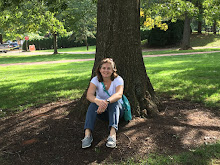When I first became interested in art with children there seemed to be a split between process-based art and product-based art. Typically, process-based art is more open-ended, more child driven and the outcomes have a much greater variety. Product-based art is characterized by children’s creations all looking the same or very similar, is often more craft than art and involves a similarity of materials and method - to the point where it is often more a following directions and fine motor activity rather than a creative act.
For a long time I have been firmly on the side of process-based art. With art in general, but particularly with art for young children the process is really where the richness is to be found. I feel honored to witness the unfolding of the work and of the story as children immerse themselves in their process.
The past few months I have moved out of my studio into working in the community and so I think more about what defines my work. Yes, it is about the process but it is not just process for the sake of process. We focus on the process as a way to develop shared habits and routines to support artistic practice.
What do I mean by artistic practice? What conditions help to support artistic practice? What is the role of community in nurturing and supporting this practice?
What do I mean by artistic practice? What conditions help to support artistic practice? What is the role of community in nurturing and supporting this practice?
Artistic practice is about making as a part of routine experience. Materials are available, routines are established for set up and clean-up and planning focuses on ways to optimize creative control for participants. This practice is grounded in a belief in the capability of participants and a desire to build on their sense of agency. The goal of the facilitator of such a practice is to set up a place for things to occur but not to control the outcome. A successful facilitator of artistic practice will feel most successful when most surprised. In general the goal is also to build the habits of practice in participants to the point where they too can serve as facilitators for peers and for newcomers.
Time, space and materials are the beginning ingredients to support artistic practice. Along with these, it helps to have mentors and fellow travelers. Shared spaces support creativity by making greater resources available than might be available to an individual. Shared spaces also create a center for creative energy so that makers working in the same space might benefit from the energy and influence of others working side by side, as well as other groups who gather there at different times. Makers leave traces and these in turn inspire new work.
This also leads me to the role of community in supporting and nurturing artistic practice. A very natural response to a new discovery is the desire to share it. We need spaces and people to share our discoveries, our observations, and our questions. Creating requires a safe space to be vulnerable. Having a gathering of other makers to check in with at regular intervals serves to support and sustain creative work. As we begin programs again this fall, I look forward to continuing to explore practice in community.
